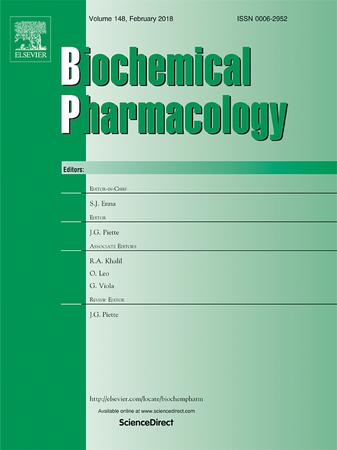非感染性葡萄膜炎中的白细胞介素-6:生物学、实验证据和治疗策略。
IF 5.3
2区 医学
Q1 PHARMACOLOGY & PHARMACY
引用次数: 0
摘要
葡萄膜炎是全球视力受损的主要原因。白细胞介素-6(IL-6)在炎症反应中上调,是与葡萄膜炎相关的最重要的炎症细胞因子之一。两种主要的 IL-6 受体(IL-6R)介导了 IL-6 的促炎和抗炎生物效应。本综述基于临床和动物模型的实验证据,从多个角度总结了 IL-6 介导葡萄膜炎的机制。其中包括对下游 IL-6 信号通路、免疫细胞和血液-视网膜屏障作用的讨论。旨在阻断 IL-6 作用的治疗策略在临床实践中取得了进展。然而,由于现有生物制剂存在感染等不良反应,选择性抑制眼内 IL-6 的药物仍需进一步开发。将 IL-6 的促炎作用转化为保护作用的新概念也需要进一步研究。此外,葡萄膜炎中 IL-6R 的转呈与 T-helper17 细胞之间的关系仍有待探索。本综述旨在巩固我们目前对 IL-6 与葡萄膜炎相关的生物学、信号通路、实验模型和免疫发病机制的理解。我们还讨论了以阻断 IL-6 作为葡萄膜炎治疗方法的临床策略。以IL-6为靶点可为改善葡萄膜炎的诊断、治疗和预后提供无限潜力。本文章由计算机程序翻译,如有差异,请以英文原文为准。

Interleukin-6 in non-infectious uveitis: Biology, experimental evidence and treatment strategies
Uveitis is the leading cause of visual impairment worldwide. Interleukin-6 (IL-6), which is upregulated in response to inflammation, is one of the most important inflammatory cytokines associated with uveitis. Two major IL-6 receptors (IL-6R) mediate the pro-inflammatory and anti-inflammatory biological effects of IL-6. This review summarized multiple perspectives on the mechanism of IL-6-mediated uveitis, based on experimental evidence from clinical and animal models. It includes discussions on the roles of the downstream IL-6 signaling pathway, immunocytes, and the blood-retinal barrier. Therapeutic strategies aimed at blocking the action of IL-6 have progressed in clinical practice. However, due to the adverse events associated with existing biologics including infections, drugs that selectively inhibit intraocular IL-6 still require further development. The novel concept of converting the pro-inflammatory effects of IL-6 into protective effects also requires further research. In addition, the relationship between the trans-presentation of IL-6R and T-helper17 cells in uveitis remains unexplored. This review aims to consolidate our current understanding of the biology, signaling pathways, experimental models, and immune pathogenesis related to IL-6 and uveitis. We also discuss clinical strategies focused on blocking IL-6 as a treatment for uveitis. Targeting IL-6 provides unlimited potential for improving the diagnosis, treatment, and prognosis of uveitis.
求助全文
通过发布文献求助,成功后即可免费获取论文全文。
去求助
来源期刊

Biochemical pharmacology
医学-药学
CiteScore
10.30
自引率
1.70%
发文量
420
审稿时长
17 days
期刊介绍:
Biochemical Pharmacology publishes original research findings, Commentaries and review articles related to the elucidation of cellular and tissue function(s) at the biochemical and molecular levels, the modification of cellular phenotype(s) by genetic, transcriptional/translational or drug/compound-induced modifications, as well as the pharmacodynamics and pharmacokinetics of xenobiotics and drugs, the latter including both small molecules and biologics.
The journal''s target audience includes scientists engaged in the identification and study of the mechanisms of action of xenobiotics, biologics and drugs and in the drug discovery and development process.
All areas of cellular biology and cellular, tissue/organ and whole animal pharmacology fall within the scope of the journal. Drug classes covered include anti-infectives, anti-inflammatory agents, chemotherapeutics, cardiovascular, endocrinological, immunological, metabolic, neurological and psychiatric drugs, as well as research on drug metabolism and kinetics. While medicinal chemistry is a topic of complimentary interest, manuscripts in this area must contain sufficient biological data to characterize pharmacologically the compounds reported. Submissions describing work focused predominately on chemical synthesis and molecular modeling will not be considered for review.
While particular emphasis is placed on reporting the results of molecular and biochemical studies, research involving the use of tissue and animal models of human pathophysiology and toxicology is of interest to the extent that it helps define drug mechanisms of action, safety and efficacy.
 求助内容:
求助内容: 应助结果提醒方式:
应助结果提醒方式:


